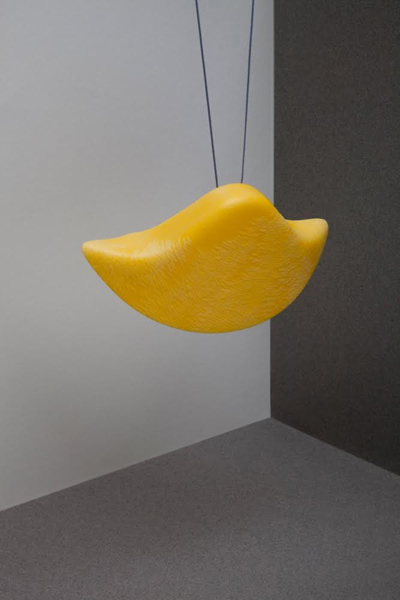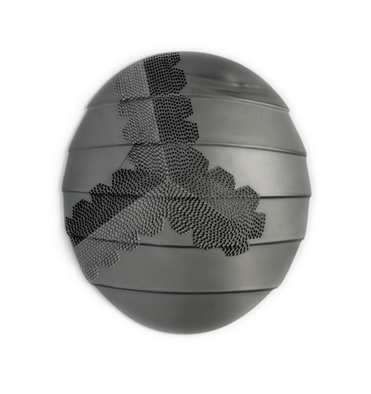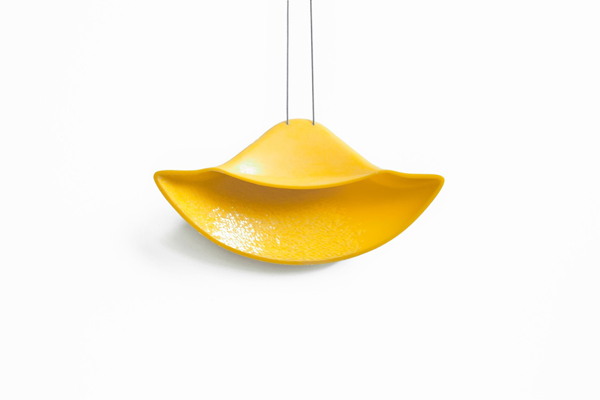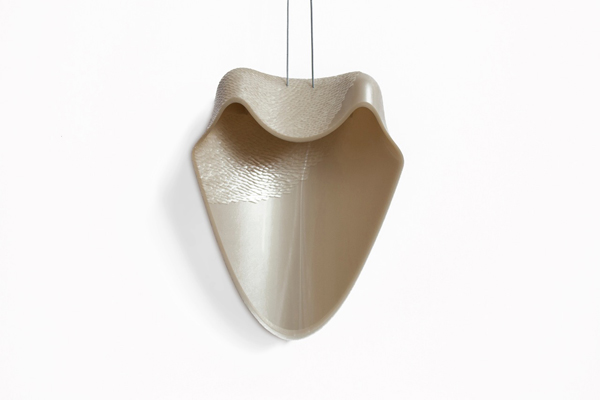
Olivia Shih: Could you talk about your time at the Gerrit Rietveld Academie? How has it influenced the way you think or work?
Benedikt Fischer: Before I came to study at the Rietveld, I only had a technical background, so I was not really familiar with the concept of so-called art jewelry. I felt comfortable there from the very first day, although it was of course not always easy, especially in the beginning. I think I came at the right time—there were really inspiring people, and the teachers, Manon van Kouswijk and Suska Mackert, were wonderful. They put a lot of thought into the program and showed us their love for the field and interesting ways of working. In short, it was perfect. The Rietveld is a powerhouse for ideas and creativity.

Olivia Shih: Could you talk about your time at the Gerrit Rietveld Academie? How has it influenced the way you think or work?
Benedikt Fischer: Before I came to study at the Rietveld, I only had a technical background, so I was not really familiar with the concept of so-called art jewelry. I felt comfortable there from the very first day, although it was of course not always easy, especially in the beginning. I think I came at the right time—there were really inspiring people, and the teachers, Manon van Kouswijk and Suska Mackert, were wonderful. They put a lot of thought into the program and showed us their love for the field and interesting ways of working. In short, it was perfect. The Rietveld is a powerhouse for ideas and creativity.
Why jewelry? What does jewelry mean to you?
Benedikt Fischer: I still remember the times when I was a kid, and my grandmother would open her wall safe to show me the jewelry she had gathered during her lifetime (that was a rare and special event). Each piece had a story, and each was very dear to her.
Also, around the age of 8, I began selling handmade wire rings with spiral shapes in the bus on the way to school. The rings were certainly inspired by the Celts, whose artifacts can be found in the area I grew up in.
I think jewelry is so many things in such small scale; it is just really what I want to do in my life.

Your series is titled Monocoque, which is defined by the Merriam-Webster Dictionary as “a type of construction in which the outer skin carries all or a major part of the stresses.” How did you happen on this word?
Benedikt Fischer: What attracted me most to that word was that it comes from the realm of nature and is now used in technical language. This friction is interesting to me, as well as how and which things shift over time.

Benedikt Fischer: I don’t know, adornment was never something I had predominately on my mind when doing my work. Of course it is undeniable that jewelry has this adornment quality, and I think for me a good piece of jewelry has to be both alluring and as well made as possible. The content, its allure, and the making must go together for me; otherwise, a piece of jewelry cannot reach any real moment of adornment. I believe one can have content in one’s work and at the same time still care about the visual aspects of it.
You often apply engraving, a traditional metalsmithing technique, to brightly colored plastic, a ubiquitous, modern material. What is the thinking behind this?
Benedikt Fischer: Applying a traditional method to an industrial material is for me a way to re-introduce in our contemporary life a certain focus on nature, animal depictions, animal material, as well as the historical connections between these things and jewelry.
I really enjoy monotonous work that would bore most other people. I enjoy being forced to concentrate and be precise.
Each piece of plastic is transformed into talismanic jewelry in your hands, but have you ever met resistance against your use of plastic materials? Why do you use it? Have you ever struggled with the perceived value of plastic in your jewelry?
Benedikt Fischer: It never struck me as out of the ordinary to use plastic. I find it challenging, as by nature I am much more attracted to natural materials. Maybe it’s a love/hate relationship. Plastic is colorful, unlike any other material, but it is also dead. Probably different generations have different opinions about materials, but real resistance I have not met yet.
Nowadays, the value of a piece should really not be connected to the determined idea of the value of a material.

Benedikt Fischer: I like a lot of artists for a lot of different reasons. It would take a whole new interview to go into that. Sometimes the excitement comes and goes, and sometimes it sticks. When that happens I can know for sure that it is true love. It’s the same with all things I love—sometimes the fire burns bright and quick but also burns down very fast. And sometimes it is a steady flame, which of course doesn’t happen too often.
Have you seen, heard, or read anything of interest lately you can recommend?
Benedikt Fischer: Hard to say, but maybe it’s good to read Eating Animals by Jonathan Safran Foer. Where I am from, our chickens began to roost in a tree, after one of them was eaten by a fox at night.
Also the quarterly magazine Monokultur is usually really interesting.
Thank you.




